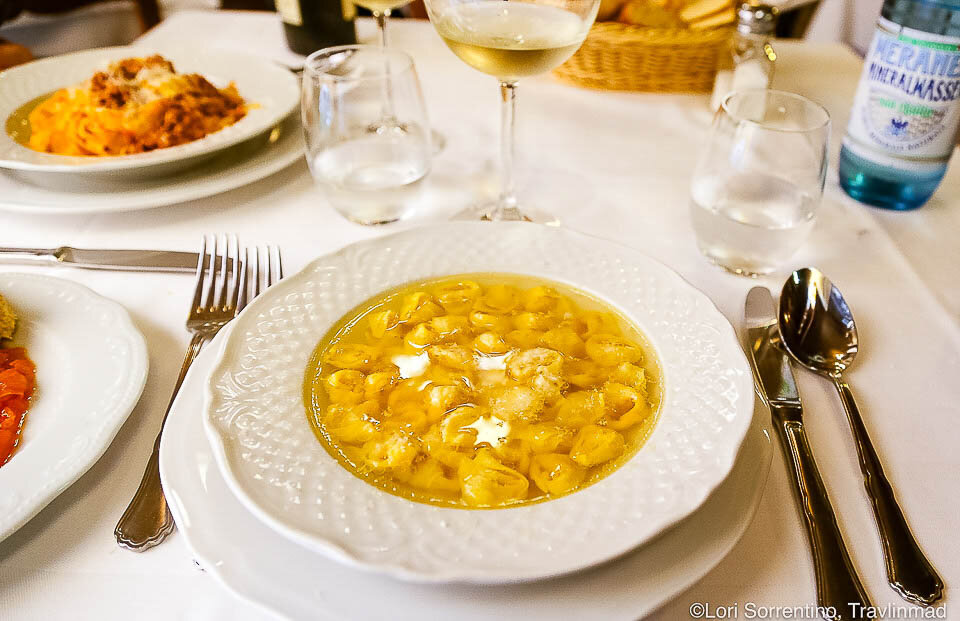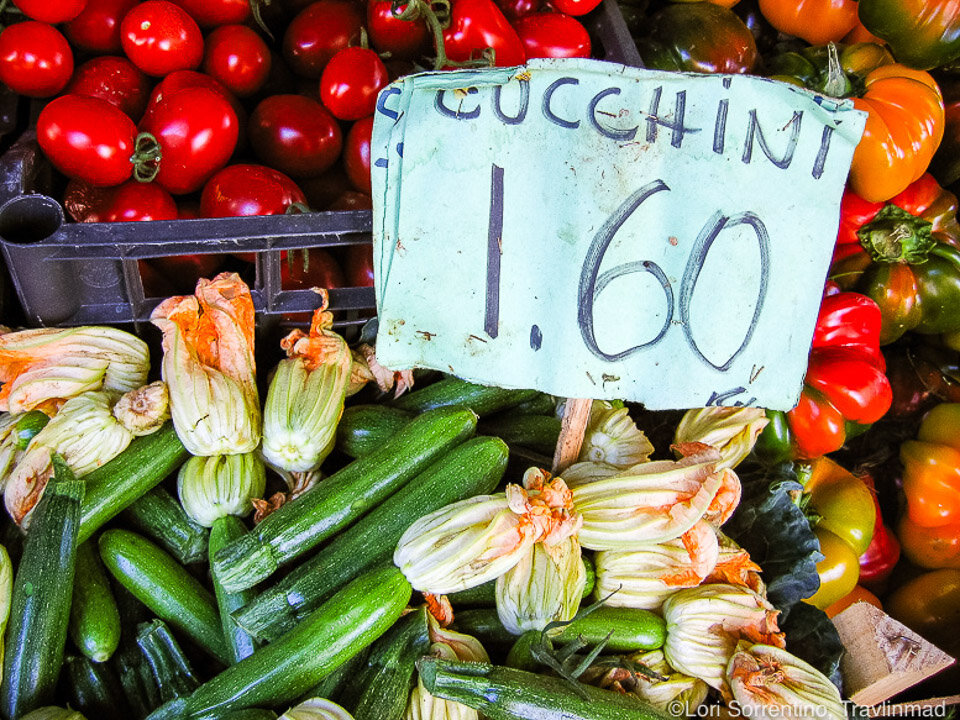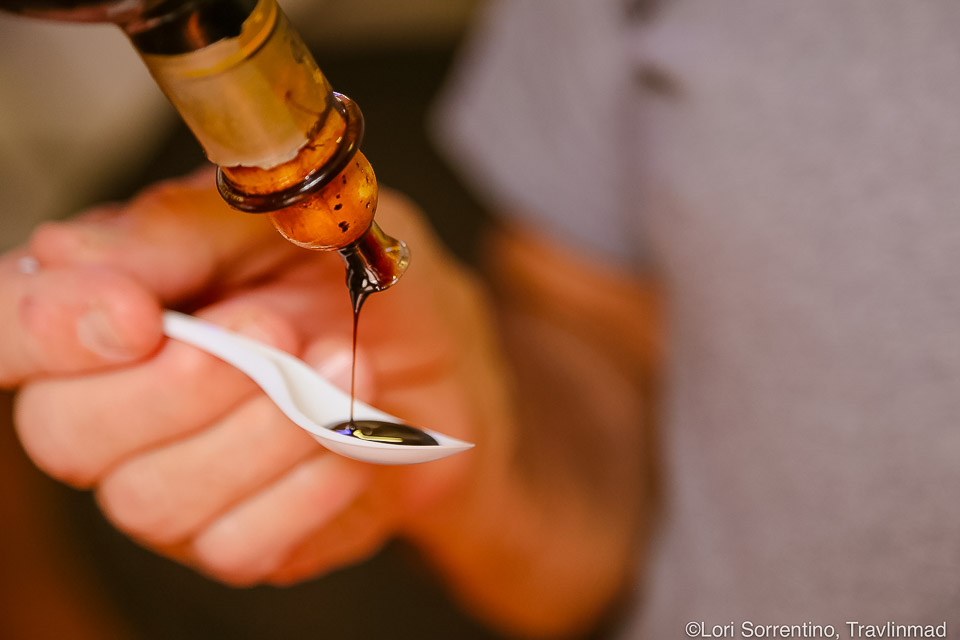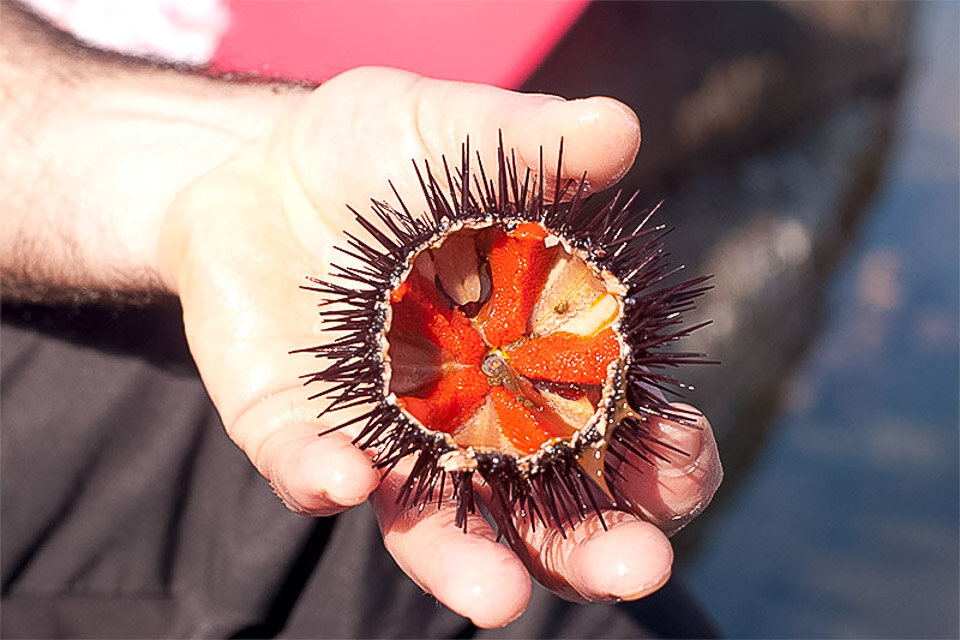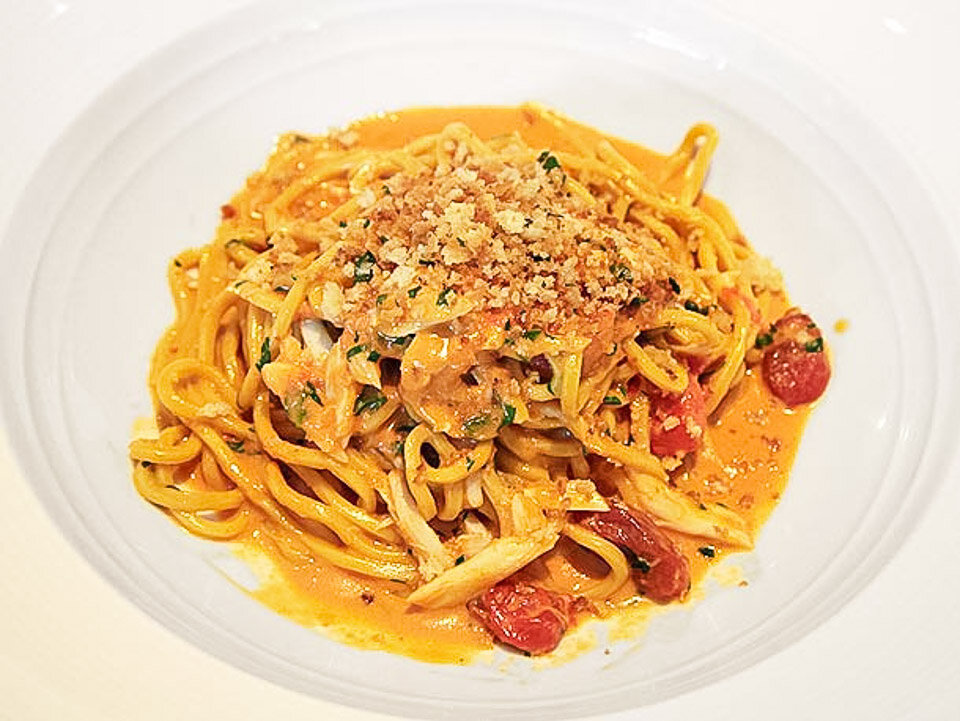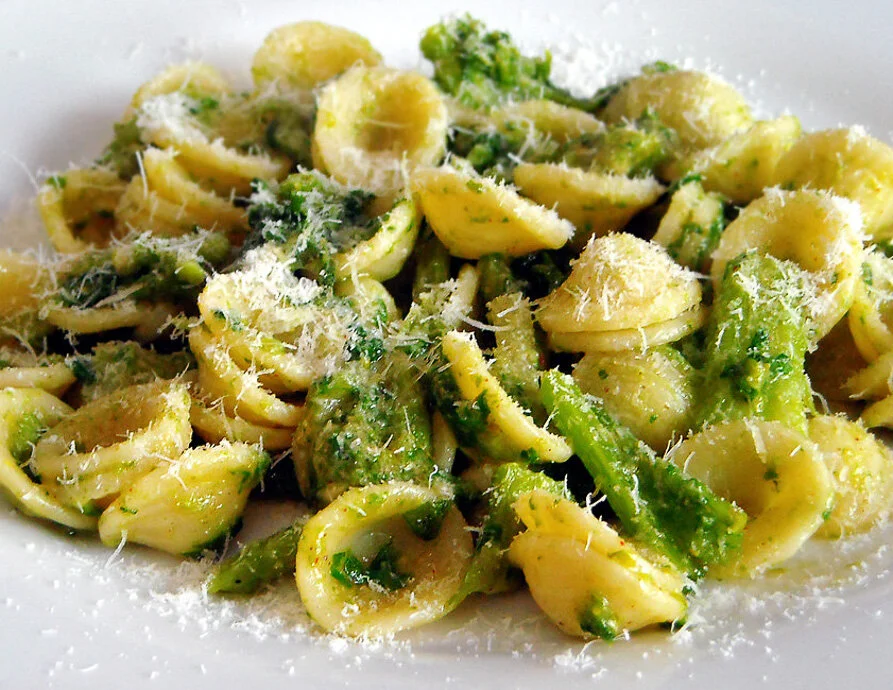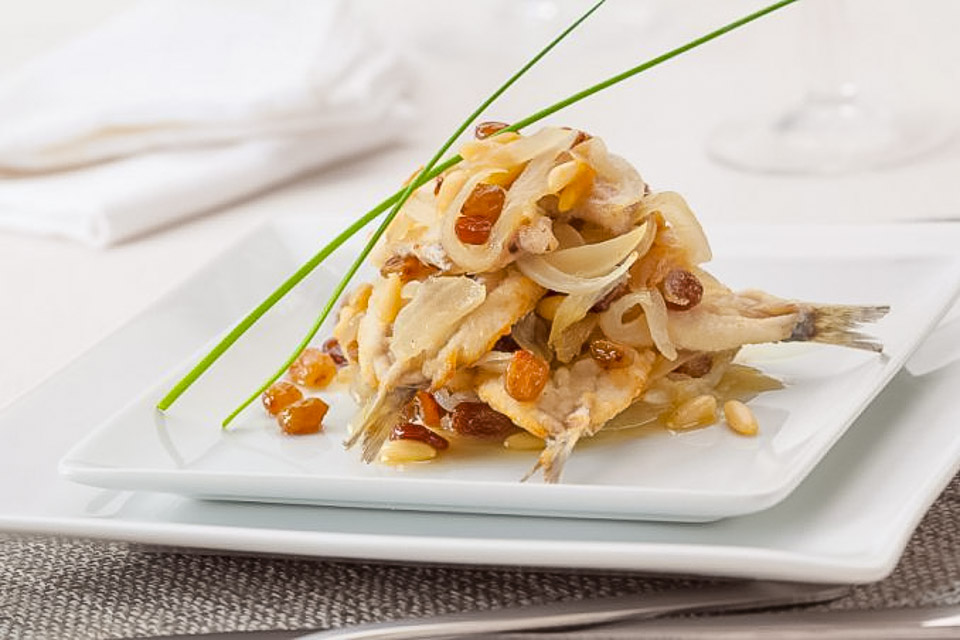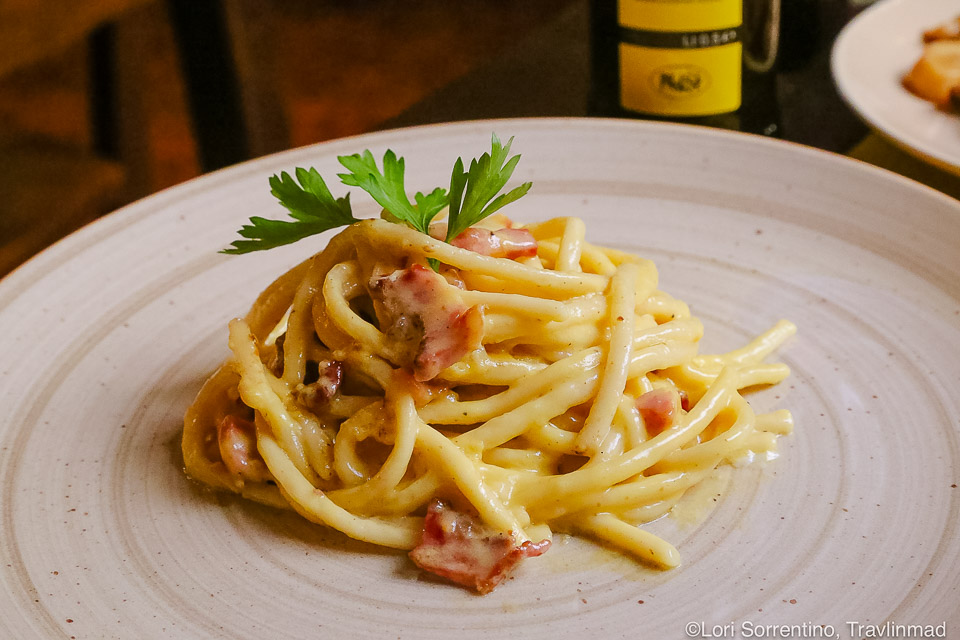Traditional Italian Food: 25+ Must-Try Regional Foods of Italy
If you love Italy and want to savor the traditional Italian food when you get there, here are 25 regional foods of Italy to look for when you’re there!
There’s no greater expression of a culture than the food people eat, am I right?
Food defines a culture, and the food of Italy in particular is the epitome of Italian culture.
It reflects the people, economy, history, climate, even the politics of Italy and is a huge part of thelocal travelexperience there.
From haute cuisine to street vendors, the local food and even thedrinks in Italyare the first thing we look for when we arrive.
Italy is in our blood (literally), we love eating the food and finding the famous Italian dishes each region is known for.
When it comes down to it, there’s really no such thing astraditional Italian food,just like there’s no such thing as Mexican food or American food and so on.
Cheesesteaks and hot dogs aren’t eaten everywhere in the United States. Everything is regional, and there are distinct regional variations of food in Italy, which uniquely reflect the region.
In this Italy food guide, we’ll cover what people eat in Italy, what foods to look for and which regions to try them in, and a bit about how these traditional foods are made.
But first, a little about the food culture in Italy and how regionality plays into Italian food…
This article may contain affiliate links. If you click through and make a qualifying purchase, we may earn a small commission at no additional cost to you. Please see thisdisclaimerfor more information.
Italy Food Culture
Eating local food when you travel — or at leasttryingit — helps you experience the local culture and all it has to offer.
Going one step further and eatinglocal foodwiththe local peoplecan become an even richer experience. It's the essence ofslow travel.
In Italy, as in many cultures, the simple act of cooking and eating is enhanced when it’s shared with others, becoming a food experience that’s more about sharing ones family, traditions, and regional pride.
Don't believe me? Have you seen the movie大晚上? :-) I know it sounds lofty, but it’s really not.
And that's the beauty of it. In Italy, food is life. Food islove. It's inextricably tied to the culture, nationally and even more so regionally.
Every region takes great pride in their local specialties and delicacies, and they will insist that theirs is the best in the country.
Here’s an example: we traveled from Bologna to Florence by train (108 km/67 miles) in just over half an hour.
That night in a small restaurant inFlorence, we asked if they served a dish we’d enjoyed in Bologna.
Our waiter’s body language changed and he asked, “Why would you want that? We don’t make that in Florence, that’s what they eat up in Bologna.”
Okay, enough said… we’llorder something else from the menu, somethingFlorentine.
It's like futbol. And Italians take both very seriously! :-)
Regional Italian Cuisine
If it's Pici, I must be in Tuscany!
It’s always fun to taste the most popular food in Italy and find the best examples of regional specialties.
The food flavors of a region tell you so much about its history - like who conquered the area before you arrived and what ingredients and influences they brought with them.
We were surprised recently on our first trip to South Tyrol in northern Italy to find the distinct Germanic culture and German-speaking Italians.
The food there is hearty and essentially German andAustrian food. It tells the story ofnorthern Italybetter than anything we could have read in a guidebook.
Another distinctive regional food feature is the pasta. If you want to know where you are in Italy, look at the pasta shape.
If you're eating Pici, you're likely in Tuscany. Orecchiette (pasta ears)? Probably inPugliadown south in the heel of the boot.
And other factors like seasonal local produce, livestock and local game, and proximity to the sea among others lend to regional variations. Here are just a few food questions you may find yourself wondering:
Why are the sauces heavier in northern Italy? Take看看日耳曼食品影响和climate in the north. Sauces become more tomato-based the further south you go.
Does Italy eathorse meat?Economics (inexpensive) and history. Iron-rich horse meat was widely consumed in the late 1800s until more recent times to help combat anemia.
There's so much seafood, why can't I just get a burger?If you're saying this, you're probably in southern Italy where fresh frutti de mare (food from the sea) is plentiful and good for you too.
Food changes as you travel the regions of Italy. What you thought was typically Italian in Venice may not resemble what you'll find in Sicily.
We've savored some of the most popular Italian dishes and had a peek at what Italians are eating in their corner of the country.
Our families came from southern Italy so we are somewhat partial to thefood of Campania and the Amalfi Coast.
If you love food and traveling, this Italy food guide includes 25 of the regional foods of Italy you should try when you visit.
We haven’t included sweets or espresso here because that’s a given in the Italian diet. And of course we're alwayssearching for the best gelato.
We hope you try these regional foods at least once, and find la buona forchetta (the good fork) on your perfect culinary tour of bella Italia!
What to Eat in Italy, and Where
1. Pizza!
Where to Eat Pizza in Italy?Naples or Sorrento, Campania
Can we just start with what many of us consider to be the best food to eat in Italy? Like any good food tour of Italy, it's only right!
Naples, Italy has many excellent dishes but they're known amongst Italians to have the best pizza in Italy! Neapolitan style pizza, orpizzaNapoletana, is like no other pizzaon the planet.
Some of thebest restaurants in Sorrentoalso make incredible pizza.
Traditional pizza Margherita, a luscious flatbread-like crust from a blazing hot brick oven is simply topped with tomato sauce, whole basil leaves and mozzarella di bufala.
Pizza in Naples really is the gold-standard and one of the most important foodiethings to do in Naples!
Is there anything better than Pizza in Napoli?
Need a PLACE TO STAY IN NAPLES when you get there?
We loved our short stay at theM Gallery Palazzo Caracciolo, an 800-year old mansion close to the train station that’s been revamped as part of the M Gallery Collection.
2. Lasagne al Forno
Where to Eat it?Bologna, Emilia Romagna
A most famous Italian dish, the word lasagna is singular (lasagne is plural), andal fornojust meansoven baked. The dish features a broad flat pasta alternately layered with different fillings depending on the region.
In Campania, noodles made from semolina and water are layered with sausage, ricotta, mozzarella and Neapolitan style ragù sauce.
We had our favorite version on ourfirst trip to Bologna.
In Emilia-Romagna, the flat pasta is traditionally made from flour, eggs, and spinach (Bolognese-style), and layered with ragù and creamy Bechamel sauce. It’s rich and oh so yummy!
Lasagne Bolognese
WHERE TO STAY IN BOLOGNA when you get there?
TheHotel Novecentois so pretty.They have gorgeous contemporary rooms & suites with marble bathrooms. Some rooms even have outdoor terraces with killer views!
Check out the latest prices and details.
3. Polenta
Where to Eat Polenta in Italy?Trentino
A cornmeal porridge that originated in northern Italy but can now be found throughout the different regions.
Usually it’s topped with a ragù style sauce and some grated cheese but it can also be had as a side.
It’s not unusual to find it topped with sauteed peppers and onions with sausage or just gorganzola cheese. It’s sometimes left to cool then sliced and fried.
4. Tortellini
Where to Eat it?Emilia Romagna
A small ring-shaped pasta from Bologna and the Emilia Romagna region stuffed with either cheese or a meat mixture. They are served in chicken broth or sometimes beef broth.
Their bigger sibling Tortelloni are shaped the same and stuffed with ricotta and spinach.
Tortellacci, the largest, is filled with cheese or a prosciutto meat mix. We had some filled with wild boar and they were incredible.
Tortellini in brodo, a traditional way to eat this stuffed pasta from Bologna
Search for BOLOGNA HOTELS
5. Ribolitta
Where to Eat it?Tuscany
The Tuscans know how to keep warm — they're famous for their rustic, peasant soups.
Ribolitta is Tuscany’s version of a traditional “scraps” soup, and every culture has these dishes, made from scraps or leftovers you wanted to use up.
This thick and hearty soup is made with seasonal veggies, cannellini beans and leftover crusty bread.
In fact, it’s the bread that thickens it. Served as a midday meal or for dinner, you’ll be tempted to eat it with a fork. Yum!
6. Osso Buco
Where to Eat it?Milan, Lombardy
A specialty of the Lombardy region, the “bone with a hole” dish is traditionally madealla Milanesewith cross-cut veal shanks, gremolata (a chopped herb mixture), vegetables, white wine and broth.
It’s a stick-to-your-ribs dish that is usually served with risotto or polenta.
Pair it with a full-bodied red likeChiantior Nobile di Montepulciano.
Osso Buco alla Milanese in Milan
WHERE TO STAY IN MILAN when you get there
7. Pesto
Where to Eat it?Liguria
Originating in Italy's northwestern Liguria region along theItalian Riviera, pesto is perfect in the warmer months when fresh locally sourced basil is most abundant.
This is a simple sauce made with basil, pignoli nuts (pine nuts), garlic, aged parmigiano or pecorino cheese, olive oil, salt and pepper.
The ratio of ingredients varies from place to place and is usually done to the maker’s taste.
Sometimes spinach or even parsley is added to lessen the strong basil aroma and develop a more complex flavor.
Trying the pesto became a fun thing to do in Genoa andCamogli, Liguria— even the Cinque Terre had great pesto dishes — and honestly some of the best we found was from a local market around the corner from our Airbnb (see below).
They sold it in pint containers, which was perfect for quick meals.
Toss it into warm pasta or spread it over grilled crostini, and you’re good to go.
Fun Fact about STAYING IN THE CINQUE TERRE:
Hills, hills, and more hills! If you’re planning a stay, do your homework first. Then if you’re going to climb steep hills with your luggage, shouldn’t you at least have a fabulous sunset view as your reward?
Check out the luxury (but very reasonable)seaview apartment we rented in Manarola!
8. Bottarga
Where to Eat it?Sicily
This salted and cured fish roe is not for the faint of heart. Commonly made from the roe of tuna, grey mullet and sometimes swordfish, it is thinly sliced over a dish much the same as truffles are grated as a condiment.
It’s most often found in Sardinia and Sicily, but has made its way into southern Italian cuisine along with parts of Tuscany.
It has an intense flavor, especially the tuna version, and some say a slight bitter aftertaste.
9. Squash Blossoms
Where to Eat it?Campania
We've enjoyed squash blossoms throughout Italy. The bright orange flowers are dipped in a light batter and gently fried.
Sometimes they’re stuffed with whatever the local cuisine and season may dictate.
Our favorite version was in Sorrento where the flowers were stuffed with a flavorful herbed cheese.
No matter how they're prepared, they're always delicious. Sip a tiny glass oflimoncelloat the end of the meal for a meal to remember.
WHERE TO STAY IN SORRENTO when you get there
There are many wonderful hotels in Sorrento, but we can’t recommendHotel Antiche Murahighly enough. It’s close to everything - especially the train to Pompeii or Naples - with pretty gardens, and a delicious breakfast buffet.
Check rates and availability here.
10. Risotto
Risi e Bisi (Risotto with Peas)—Venice and the Veneto
Risotto alla Milanese(with saffron)—Milan
Lombardy and Veneto are two places where foodies will be in risotto heaven!
这奶油米饭艾保利奥米和菜用chicken or beef broth that originated in northern Italy but can now be found throughout Italy.
The short grain rice isslowlystirred with the broth over low heat until thick and creamy.
Parmigiano reggiano cheese is sometimes added, or saffron, maybe mushrooms or fresh herbs. It all depends on what the dish is accompanying. It's yummy and should be enjoyed hot.
11. Balsamic di Modena
Where to Eat it?Modena, Emilia Romagna
We could write a book on balsamic, we love it that much.
True balsamic is produced in Emilia Romagna by long-established local families and its production and final product is heavily governed by a strict set of regulations known as DOP (“Protected Designation of Origin”).
Not fermented like a “traditional” vinegar, true Balsamic di Modena is made from cooked grape juice that over time slowly concentrates in a system of wooden barrels.
From the 3 year old IGP, to a minimum of 12 years to become DOP, to the very finest aged for 25 years, there is nothing else like it.
At approximately €1.000,00 per liter ($1232.00 USD), it is one of themost expensive food itemsin the world.
如果你认为香醋甚至condiment, try the real deal on anything from cheese to gelato, and taste for yourself why this transformative syrup is one of the true Italian delicacies.
Traditional Balsamico di Modena, one of Italy's most famous regional Italian foods
12. Pecorino Toscano
Where to Eat it?Pienza, Tuscany
Made from sheep’s milk and milder than Pecorino Romano, this is one of Tuscany’s favorite cheeses.
It can be aged for one month and eaten as a soft cheese or aged longer for a harder more intense cheese.
The aroma and taste can vary depending on what the sheep are eating at the time of production but we’ve yet to find one we didn’t enjoy.
Enjoy acheesemaking tour and tastingfor a real farm-to-table foodie experience!
13. Ragù a la Bolognese
Where to Eat it?Bologna, Emilia Romagna
We were asked once in Bologna, “You’re not vegetarians are you? Because this is no place for that.” Ragù alla Bolognese is one of the quintessentialfoods you have to eat in Bologna.
Made with varying amounts of beef, pork, veal and often pancetta, the meat is browned with garlic and olive oil then simmered with a small amount of tomato paste, white wine, and milk.
In Bologna, tagliatelle is the traditional pasta for the dish.
Enjoy with a nice acidy Italian red like Montepulciano d’Abruzzo or a frizzante Barbera from Orsi - Vigneto San Vito, and you’re in heaven.
Tagliatelle with spinach, Ragù a la Bolognese
14. Bistecca Fiorentina
Where to Eat it?Tuscany
A hallmark of Tuscan cuisine, this Florentine-style steak is as simple and delicious as it gets.
A 2 inch thick t-bone or porterhouse steak from Chianina cattle, a Tuscan breed prized for its meat, is grilled over blazing hot coals.
肉的roastin刷用橄榄油g using a brush made from rosemary and is seasoned with only salt and pepper.
Served rare, it is a carnivore’s dream steak.
If you’re having this you might as well go all out and have a Brunello di Montalcino with it.
You can ask for it to be cooked a bit more than rare, just be prepared for the looks you’re bound to get.
15. Truffles
Where to Eat it?Piedmont
A true love-hate relationship exists over this earthy delicacy given its unique and hard-to-define flavor - it seems you're either not a fan or you're smitten forever.
The prized black truffle is most commonly hunted in the wild by experienced truffle hunters and their trained canine companions (pigs have been outlawed from truffle hunting in Italy).
You can even go along on a tour for aunique farm-to-table food tour.
Truffles can also be cultivated in orchards of oak and hazelnut trees. Wild or cultivated, it doesn’t matter.
When thinly shaved slices are on your dish there’s no mistaking the aroma and flavor.
For a more intense flavor the rarer white truffle is preferred by gourmet chefs the world over.
The most expensive food in the world, the white truffle can be found in the Langheregion of Piedmontand sell for over €2500 (over $3000 USD) a kilo.
Hunting for black truffles in Emilia Romagna, Italy
16. Focaccia
Where to Eat it?Throughout Italy
Found throughout Italy this is a simple soft flat bread similar to a pizza dough but lighter and more bread-like. Nothing fancy here.
It’s usually baked with just a coating of olive oil and some salt. We’ve had it made with different herbs, a few pieces of onion and green olives.
But our favorite so far was made with harvest wine grapes in a common foccacia known asSchiacciata con l'uva,orfoccacia with grapes.
17. Prosciutto
Where to Eat it?Emilia Romagna
The most famous of this dry-cured ham comes from Parma, but we’ve had the pleasure of enjoying its rival in quality in Modena too.
The finest prosciutto is designated as DOP (“Protected Designation of Origin”).
To earn the DOP label a strict set of rules must be followed starting with the pigs that are raised in Italy under DOP regulations.
Aged for a minimum of 14 months then checked by a DOP inspector, Prosciutto is a buttery smooth delicacy well worth the wait.
Aging prosciutto, one of the DOP traditional Italian foods of Italy
18. Sea Urchin
Where to Eat it?Sardinia
Sea urchins are plentiful along the warmer coastal areas of Italy likePositano, the Amalfi coast, Capri, and Sardinia, and are best avoided when you're in the water because of their sharp spines that will cause you a good bit of discomfort.
But on the table, the urchin roe is added to spaghetti to create a sublime local specialty calledPasta con Polpa di Riccithat is both indescribable and delicious.
We think it's slightly sweet, slightly salty and briny - just like the sea. It pairs perfectly with acrisp Italian white wineto balance the richness of the roe, and makes a perfect lunch on the Italy coast!
WHERE TO STAY IN SARDINIA?
19. Ragù di Cinghiale (Wild Boar)
Where to Eat it?Umbria
There is a difference of opinion as to whether the tastiest wild boar are in Umbria or in Tuscany.
Our experience has been with ragu made from the Tuscan variety, but we can't imagine having a bad version of this hearty meal because the meat is so flavorful.
The fall hunting season brings this highly regarded meat to the table.
Often served withpappardelle, a wide ribbon-shaped pasta, orpici, a thick spaghetti-like pasta you'll find all over Tuscany, it's delicious over any kind of pasta or on its own.
This is a fall and winter stick-to-your-ribs dish. Pair it with any of the Tuscan full-bodied reds and enjoy.
20. Parmigiano Reggiano
Where to Eat it?Emilia Romagna
Every time we visit Bologna we enjoy the true DOP “King of Cheese”. Production is labor intensive and heavily regulated by DOP rules - even the milk cows and what they are eating is governed by DOP rules.
Sounds pretty strict until you’ve tasted that nutty, tangy goodness. There's nothing like it!
轮的奶酪必须存储和年龄minimum of 12 months.
They are then checked by a DOP inspector and must pass the test before being labeled as DOP.
Next time you’re in an Italian deli that cuts wedges from a cheese wheel, look for the large imprinted number on the side of the round.
That’s the consortium where the round was produced. Strict yes, butcosi delizioso!
Wheels of DOP Parmigiano Reggiano cheese, a traditional Italian food
WHERE TO STAY in Bologna when you get there?
TheHotel Touring. It’s got a homey feel and an ideal location just a few minutes’ walk from Piazza Maggiore. Bonus: it has a panoramic rooftop terrace!
21. Bufala Mozzarella
Where to Eat it?Salerno, Capri, Campania
Native to theCampania regionof Italy, this iconic cheese is made from the milk of the Italian water buffalo, with the curds from the bufala milk stretched and pulled into small balls.
It adorns every Italian table in the region and is often eaten with fresh basil and ripe Campania tomatoes in a salad adorned with the red, white, and green colors of Italy, known asInsalata Caprese.
Add this salad to your list ofthings to do in Capri!
NOTE: Don't confusebufala mozzarellawithburrata, the ball of bufala mozzarella stuffed with fresh cream and cheese curds which originated in Puglia. Although both are equally delicious!
22. Orecchiette Cime di Rapa
Where to Eat it?Foggia, Puglia
Orecchiete, orlittle pasta earsare still made by hand in Puglia (orApulia, the Latin name for the region), located in the heel of Italy's boot.
The shape is made by smearing little dough discs against the table to create a cup, perfect for holding whatever sauce you wish to add.
But in Bari in the Province ofPuglia, Orecchiette is typically served withbroccoli rabeorrapini, a bitter green that's popular in the Mediterranean diet and resembles broccolini more than the typical broccoli eaten in the US.
23. Sarde in Saor
Where to Eat it?Venice, Veneto
Traditional in Venice, this authentic Italian dish of fried or broiled sardines is topped with onions stewed in oil and vinegar, mixed with raisins and sometimes pignoli or pine nuts.
Preserved with a vinegar base followed by a hint of sweetness, this dish epitomizes Venetian seafood.
It’s typically served cold or at room temperature and is Venice culture and history all in one dish!
Sarde en saor, a traditional Italian food in Venice
Looking for GREAT HOTELS IN VENICE? Check availability for Venice
24. Cacio e Pepe
Where to Eat it?Rome
You’ll see this simple traditional pasta all over Rome, but don’t let the simplicity fool you.
Being able to make a dish with just a few ingredients look and taste elegant is no small feat, but Romans do it best, balancing the flavors so brilliantly you barely notice the cheese.
Eating this Italian dish is practically abucket list itemon its own!Cacio e Pepeliterally meanscheese and pepperand it’s the saltiness of the cheese that complements the pepper.
The noodle is usually a long spaghetti-type egg pasta called Tagliolini or sometimes bucatini (the hollow spaghetti, and my favorite of the two!) and is typically served with finely grated Grana Padana or Pecornino cheese.
If you find a restaurant in Rome who makesCacio e Pepewell, stick with them. And althoughtipping in Romeisn’t usually a thing, leave them a good one just to say Grazie!
Traditional Spaghetti alla Carbonara made with creamy egg and cheese
25. Carbonara
Where to Eat it?Rome, Lazio
Originating in Rome, Spaghetti alla Carbonara is a hearty dish is made with egg, pecorino romano or parmigiano reggiano cheese, pancetta, or for an even richer version, guanciali (pork cheeks).
Sometimes olive oil is used along with garlic and flat leaf parsley, but no matter the recipe, it’s usually prepared with lots of black pepper.
Taking afood tour in Romeis a great way to eat your way to Italian food nirvana, and always a foodie favorite. So much good food, you need an entirefood guide just for Rome!
Arancini, or rice balls, are a traditional Italian food
26. Arancini
Where to Eat it?SicilyorRome
Meaning “little oranges” these fried rice balls are believed to have originated in Sicily and are afavorite Sicilian food.
Cooked arborio rice, or risotto, is shaped into a small ball, coated with bread crumbs and deep fried.
But there’s a surprise in the middle. Arancini are typically stuffed with mozzarella or fontina cheeses, or ragu sauce with a bit of meat. We’ve even had them stuffed with peas and ragu.
You might also eat this inRome, where it will be calledSuppliand is usually stuffed with ragu and mozzarella cheese.
Don’t ask for Arancini in Rome or you might be told you need to go to Sicily!
Whatever you do, break it open before you bite into it and give it a moment to cool.
And wherever you try it, you’ll love this favorite snack in Italy.
27. Culurgiones
Where to Eat It?Sardinia
Culurgionesare the Sardinian version of ravioli. The dish originated in the region ofOgliastra, where each village has its own recipe.
这面是用面团made of re-milled semolina, durum wheat flour, water and a pinch of salt, and a variety of filling that traditionally includes boiled potatoes, garlic and a kind of pecorino cheese. Some will also add a hint of fresh mint.
The proportions and the kind of pecorino - aged or fresh - vary from village to village, each one suggesting that theirs is the original recipe.
Culurgiones are best served plain with just grated pecorino cheese (no oil or butter!) or with a plain tomato sauce and a good sprinkle of pecorino.
For a quintessential Sardinian aperitif, try them deep fried!
Hand made Culurgiones from Sardinia. Photo courtesy: StrictlySardinia
There are more than 25 iconic regional Italian foods…
Which foods would you add to the list?
Love Traditional Italian food?
Check out more about the foods of Italy and the Mediterranean Diet:





